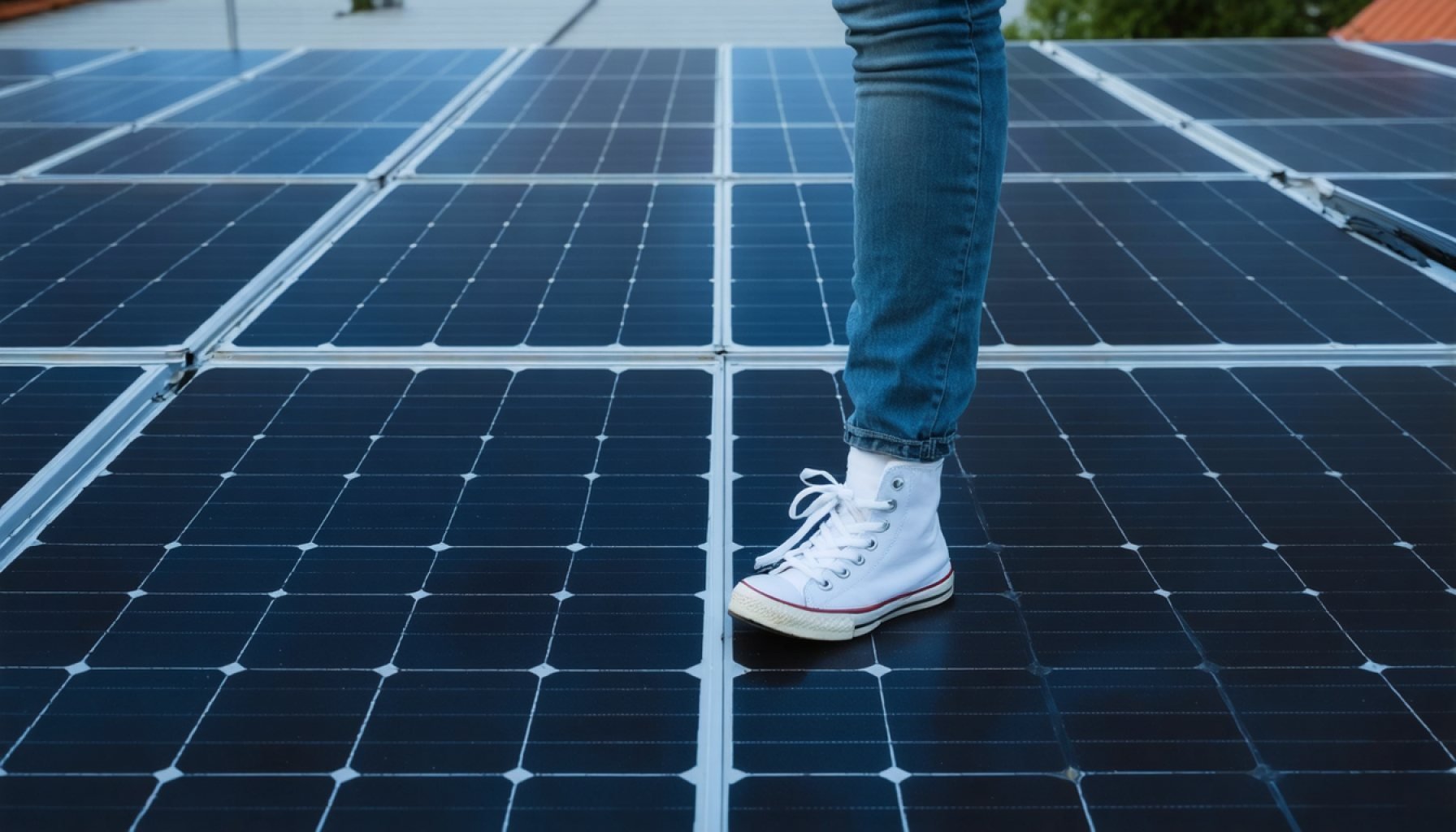- Solar panels face environmental challenges when discarded, often ending up in landfills.
- PV Circonomy, a California-based company, offers a solution with a 99.3% material recovery rate.
- Using AI and machine learning, the company efficiently recycles solar panel materials.
- Recovered glass is transformed into “ground glass pozzolan” for stronger, lower-carbon concrete.
- EVA film from panels is repurposed into high-quality materials for new consumer products.
- By placing recycling units at decommissioning sites, PV Circonomy reduces transportation costs and promotes sustainability.
- The company’s approach highlights the potential to convert waste into valuable resources, setting a new standard for sustainability.
Picture a landscape dotted with gleaming solar panels, silently generating power from the sun, weaving a narrative of a cleaner, brighter future. Yet, lurking in the shadows of this progress is an environmental puzzle—what becomes of these solar champions when their time under the sun wanes? Many find their destinies in landfills, where they become part of the problem they aimed to solve.
Enter PV Circonomy, a California-based innovator with a dazzling promise to rewrite this story. Armed with cutting-edge automated technology, they champion an astounding 99.3% material recovery rate, ensuring that little to nothing is wasted. Their pioneering approach not only recycles but elevates, transforming discarded solar panel materials into treasures for the future.
Inside their facilities, an orchestra of AI and machine learning hums quietly, expertly sorting and processing panels. These robots meticulously dismantle each panel, retrieving and purifying every valuable component. Glass becomes a “ground glass pozzolan,” poised to bolster concrete’s strength and trim carbon emissions—with a scientifically backed ASTM C1866 certification to boot. Meanwhile, what was once EVA film in solar panels resurfaces as high-quality material ready to stride into the fashion world, hinting at a novel destination for old panels—your next fashionable sneakers.
PV Circonomy’s vision stretches beyond recycling; it’s a bold new standard for sustainability. By strategically placing recycling units at decommissioning sites, they deftly sidestep hefty transportation costs, making eco-friendly choices practical and economical. The company’s innovation teaches us that with ingenuity, yesterday’s waste can step confidently into tomorrow’s spotlight, transforming what was once discarded into something extraordinary.
Discover the Future of Solar Panel Recycling: Turning Waste into Wealth
How-To Steps & Life Hacks: Recycle Your Solar Panels Efficiently
1. Identify Your Local Recycler: Start by locating a nearby solar panel recycling facility. Contact companies like PV Circonomy to understand the services they offer.
2. Assess Your Panels: Evaluate the condition and materials of your solar panels. Knowing which materials can be recycled will help you ask the right questions to your recycler.
3. Transportation Tips: If possible, choose a recycler that offers on-site facilities to minimize transportation costs and environmental impact.
4. Documentation: Ensure that you receive certification for the recycled materials, which can be important for compliance and resale value.
Real-World Use Cases: Transforming Solar Waste into High-Value Products
PV Circonomy’s innovative recycling technology not only recycles solar panels but also repurposes materials into valuable products:
– Ground Glass Pozzolan: Recycled glass can be used to strengthen concrete, reducing the carbon footprint of construction projects.
– Fashion Industry Integration: EVA film is repurposed into materials suitable for high-quality fashion items, potentially appearing in wearable products.
Market Forecasts & Industry Trends
The solar panel recycling industry is expected to grow significantly over the next decade. As solar installations increase, the demand for sustainable disposal solutions will rise:
– Global Market Growth: According to a report by Transparency Market Research, the global solar panel recycling market is projected to reach $269.8 million by 2025, driven by stringent regulations and rising environmental awareness.
– Advancements in Technology: Technological advancements such as AI-driven sorting and enhanced material recovery processes will play a crucial role in the market’s expansion.
Reviews & Comparisons
PV Circonomy is notable for its high material recovery rate, standing at 99.3%, compared to traditional methods that recover significantly less. Review sites and customer testimonials often highlight their efficient processes and environmentally sustainable practices.
Controversies & Limitations
While the technology is promising, the current limitation involves the high initial cost of setting up such advanced recycling facilities. Moreover, regulatory differences across regions can pose challenges for standardizing these processes globally.
Features, Specs & Pricing
PV Circonomy utilizes AI and machine learning to optimize their recycling processes. Though specifics on pricing are not publicly detailed, services are often customized based on the scale and type of panels being processed, offering significant savings on transportation through on-site recycling units.
Security & Sustainability
By recycling materials into ASTM-certified products, PV Circonomy ensures that its outputs meet stringent safety and sustainability standards. This not only secures a cleaner environment but also supports the credibility of the recycled products.
Insights & Predictions
As solar panels continue to proliferate, expect more companies to adopt automated and sustainable recycling technologies. The sector could see more entrants and collaborations aimed at enhancing recycling efficiency and material recovery rates.
Tutorials & Compatibility
For those interested in exploring solar panel recycling, online tutorials can provide useful insights into how these processes work and how to prepare panels for recycling.
Pros & Cons Overview
Pros:
– Extremely high material recovery rate (99.3%)
– Innovative use of recycled materials in new industries
– Cost-effective with on-site recycling options
Cons:
– High setup costs for recycling facilities
– Variability in recycling standards across different regions
Actionable Recommendations
– Engage with Local Recycling Initiatives: Partner with local initiatives to stay ahead of recycling requirements.
– Consider the Full Lifecycle: When purchasing solar panels, consider manufacturers that offer end-of-life recycling programs.
– Stay Informed on Regulations: Keep abreast of evolving legislation related to solar panel disposal and recycling.
For more information on solar panel recycling and sustainable practices, visit Energy.gov.












